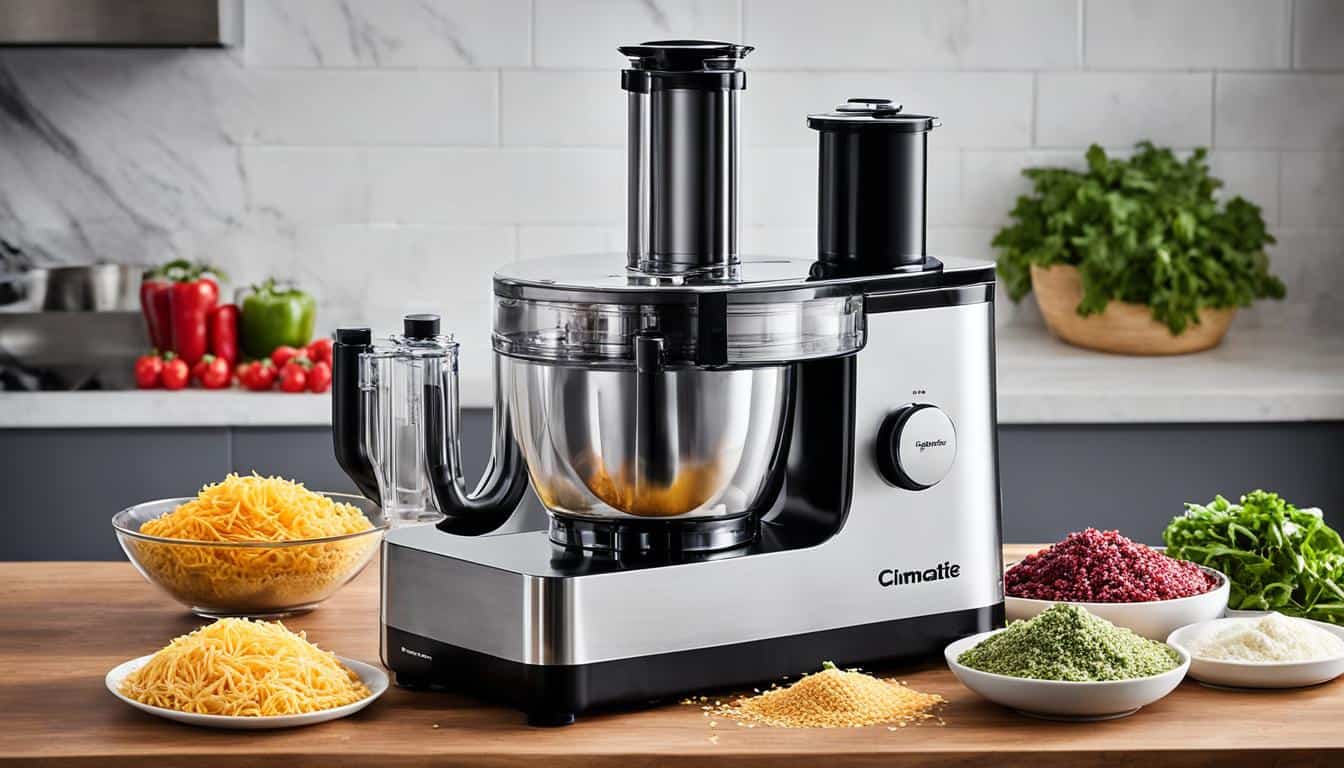The best food processor for making pasteles can significantly reduce prep time and ensure consistent results, making the process easier and more efficient. It can also help achieve a smoother masa and is a versatile tool for various recipes, offering a valuable addition to the kitchen.
Grinding Your Way to Perfect Pasteles: Ditch the Grater, Embrace the Food Processor
Are you tired of sore arms and endless grated vegetables? Say goodbye to traditional methods and hello to the power of a food processor for grinding your way to perfect pasteles. Not only does a food processor make the process more efficient, but it saves you valuable time and effort.
Using a food processor for pasteles means you’ll no longer need to worry about unevenly grated ingredients, as the machine ensures consistent results every time.
Measure out your ingredients, and let the food processor work its magic. With its high-speed motor, you’ll be able to grind large quantities of ingredients in no time.
Not only does a food processor simplify the grinding process, but it can also help you achieve a smoother masa for your pasteles. The powerful blades break down ingredients like dough and plantains, resulting in a texture that is perfect for forming the masa discs used in making pasteles.
In addition to making pasteles, a food processor is a versatile kitchen tool that can be used for a variety of other recipes. From making sauces and dips to s edding cheese and vegetables, a food processor can quickly become a go-to appliance in your kitchen.
“I used to spend hours grating vegetables for my pasteles, but since upgrading to a food processor, it’s made the process so much easier and efficient. The consistency has improved, and I’m able to make larger batches with less effort.”
Ready to wave goodbye to your grater and embrace the food processor? In the next section, we’ll explore the factors to consider when choosing the right food processor for your pasteles-making journey.
Pasteles Powerhouse: Choosing the Right Tool for the Job
When it comes to making delicious pasteles, the right tool can make all the difference. A food processor is a must-have for anyone serious about making high-quality pasteles quickly and easily. But with so many options available, how do you choose the right one for you? Here are some factors to consider:
| Feature | Importance |
|---|---|
| Motor Power | The motor power affects the food processor’s ability to grind tough ingredients, such as yucca and plantains, into the perfect consistency for pasteles. |
| Capacity | The capacity of the food processor determines the amount of masa you can make in one go. Consider the number of pasteles you want to make and select a processor accordingly. |
| Durability | Pick a food processor that can withstand the repetitive workload of pasteles making. A durable machine will last longer and provide you with consistently good results. |
Make sure to keep these factors in mind while choosing your food processor for pasteles powerhouse. You want a tool that can grind your ingredients effortlessly and produce the perfect texture.
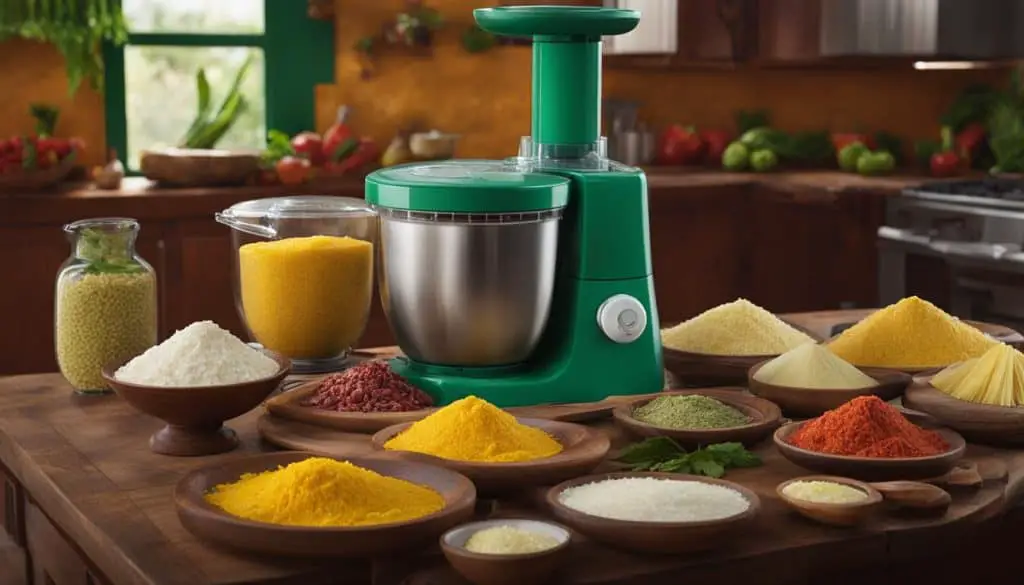
Beyond Bananas: A Food Processor’s Versatility in Mastering Pasteles
When it comes to making pasteles, a food processor is an invaluable tool. But did you know that a food processor’s versatility goes beyond just preparing ingredients for pasteles? With this powerful kitchen appliance, you can experiment and create an array of dishes, from sauces to desserts.
The food processor can be used to make the famous Puerto Rican sofrito, which is made up of a combination of onions, garlic, peppers, tomato sauce, oregano, and achiote. Simply blend all the ingredients in the food processor, and you’ll have a flavorful sofrito that you can use in many other dishes, like rice and beans or stews.
You can also use the food processor to make dough for empanadas or to chop nuts and fruits for your favorite dessert. The possibilities are endless!
If you’re looking to expand your cooking skills and explore new recipes, the food processor is the perfect tool. It can help you save time and effort, while also offering versatility and creativity in the kitchen.
Blender vs. Food Processor: Picking the Champion for Creamy Masa
When it comes to making smooth and creamy masa for pasteles, you may wonder whether a blender or a food processor is the right tool for the job.
Both appliances can break down ingredients to create a silky texture, but there are some key differences to consider when picking the champion for your creamy masa.
If you’re looking for maximum power, a food processor may be your best bet. Its motor can handle tough ingredients like plantains and yucca with ease, creating a smooth consistency with minimal effort.
Food processors typically have a larger capacity, making it easier to prepare large batches of masa at once.
On the other hand, blenders are known for their ability to incorporate air into foods, resulting in a lighter, fluffier texture. If you’re looking to create a softer masa that’s easy to spread, a blender may be the better option.
Blenders are versatile appliances that can be used for a variety of tasks, from making smoothies and soups to pureeing vegetables.
| Factor | Food Processor | Blender |
|---|---|---|
| Motor Power | High | Medium |
| Consistency | Smooth and firm | Light and fluffy |
| Capacity | Large | Small to medium |
| Versatility | Minimal | High |
Ultimately, the decision between a blender and a food processor will depend on your personal preferences and cooking needs.
If you frequently make pasteles and other Latin dishes, a food processor may be a worthwhile investment. However, if you’re looking for an appliance that can multitask in the kitchen, a blender may be the way to go.
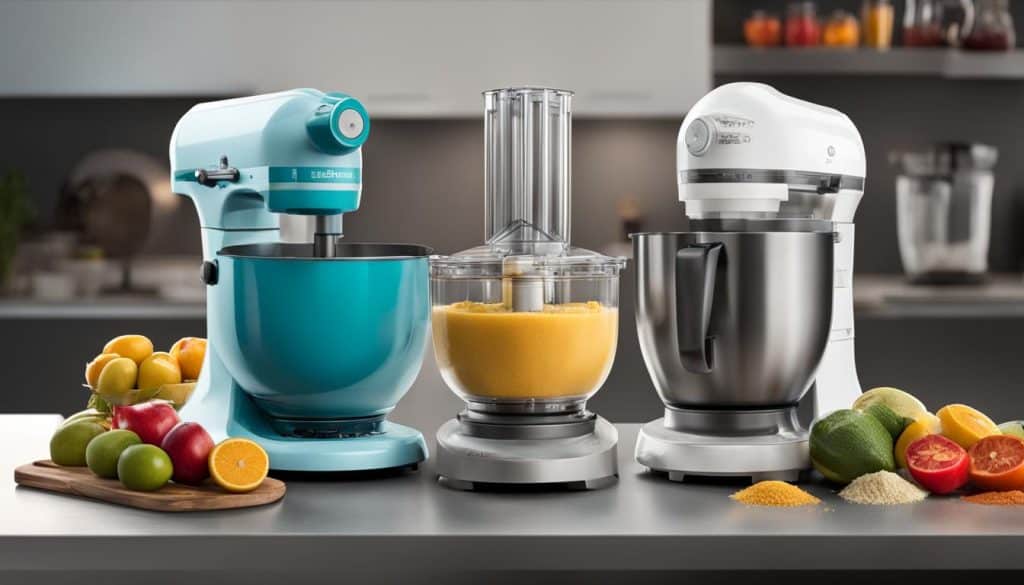
Top Food Processors for Effortless Pasteles: Cuisinart, Breville, and Beyond
If you’re searching for a food processor to make your next batch of pasteles, we’ve got you covered. After thorough testing and research, we recommend the top food processors for effortlessly creating the perfect pasteles. Our top picks include:
| Brand | Model | Capacity | Price |
|---|---|---|---|
| Cuisinart | Classic 14 Cup | 14 cups | $199 |
| Breville | Sous Chef 16 Pro | 16 cups | $499 |
| Black+Decker | 8-Cup Food Processor | 8 cups | $34.99 |
The Cuisinart Classic 14 Cup and Breville Sous Chef 16 Pro are both powerful, reliable options for making pasteles with ease. They both feature large capacities, strong motors, and a range of blade attachments to ensure perfect consistency. While they may be on the pricier side, they are worth the investment for anyone serious about making pasteles.
If you’re on a budget, the Black+Decker 8-Cup Food Processor is a great option. It may not have the same power or capacity as the Cuisinart or Breville, but it’s still a reliable machine that can handle basic pasteles-making tasks at a fraction of the price.
Of course, many other noteworthy food processors on the market can get the job done, including models from KitchenAid, Hamilton Beach, and Ninja. When making your selection, be sure to consider factors such as motor power, capacity, and durability to find the right tool for your pasteles-making journey.
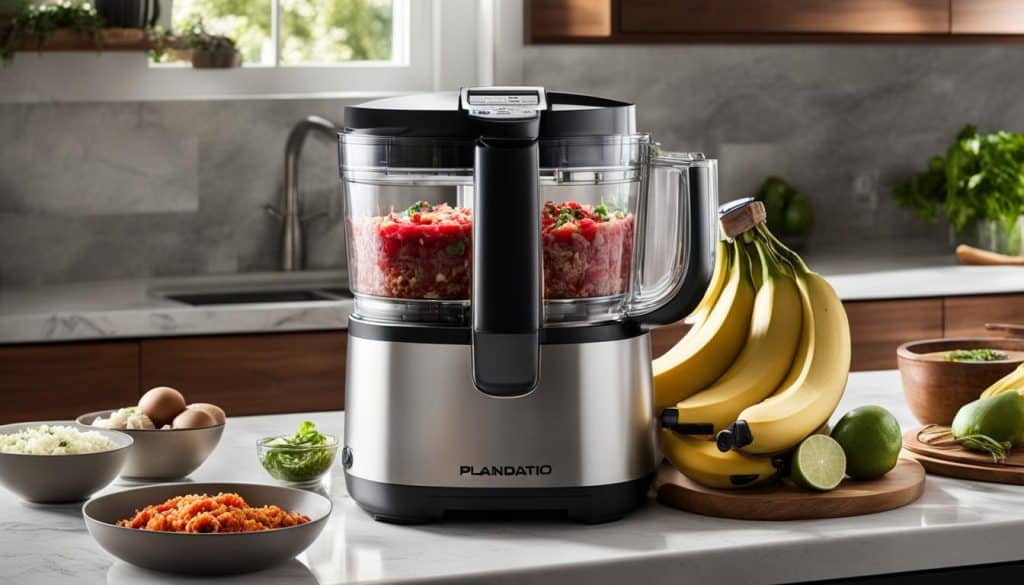
Professional Precision for the Discerning Pasteles Maker
For the discerning pasteles maker who wants maximum precision, investing in a food processor with advanced features is key. Several brands offer models with advanced precision and automation features that can help elevate your pasteles-making game.
One top pick is the KitchenAid 16-Cup Pro Line Food Processor, which boasts a commercial-grade motor and ExactSlice system that allows you to adjust the thickness of your slices with the touch of a button.
It also includes a range of accessories for chopping, kneading, emulsifying, and more, making it a versatile addition to any kitchen.
Another option worth considering is the Breville Sous Chef 16 Pro, which features a powerful 1200-watt induction motor and an extra-wide feed chute that allows you to process larger ingredients with ease. It also offers 24 precise thickness settings and a variety of discs and blades for different types of cuts.
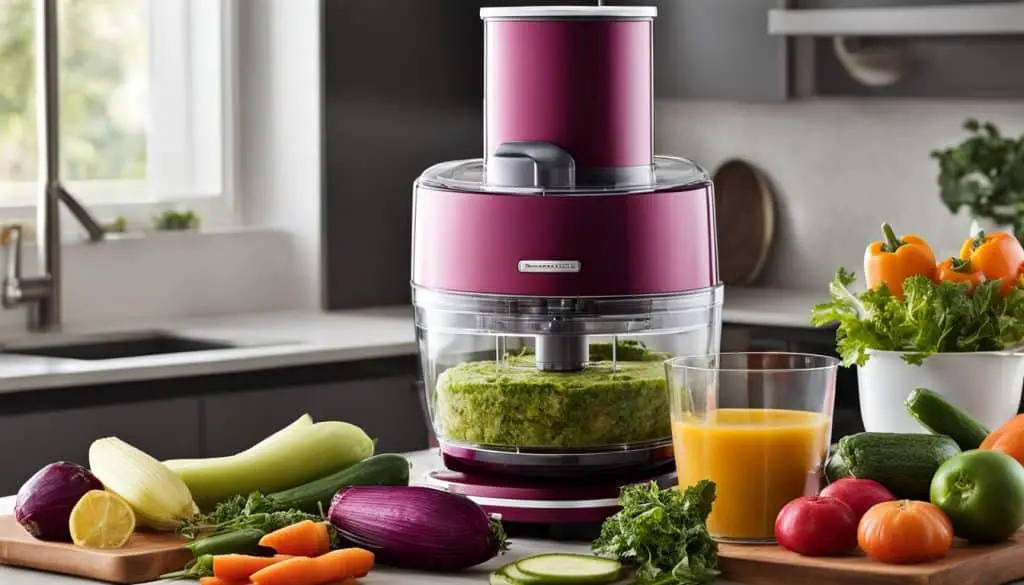
Whichever food processor you choose, be sure to look for models with precision cutting and grating blades, as well as adjustable speed settings that allow you to customize your prep work to suit your specific needs.
With these advanced features at your disposal, you can achieve perfect texture and consistency with every batch of pasteles you make.
KitchenAid vs. Food Processor: Finding the Perfect Match for Your Pasteles Journey
When it comes to making pasteles, choosing the right kitchen tool is crucial. While a food processor is a popular choice for many pasteles enthusiasts, some prefer to use a KitchenAid mixer. But which option is the best fit for your pasteles journey? Let’s explore the pros and cons of each.
KitchenAid Mixer: One of the main advantages of using a KitchenAid mixer is that it can handle larger quantities of masa at once. This makes it a great option for those making pasteles in bulk. Additionally, the KitchenAid mixer offers a gentle mixing action that helps prevent air pockets and ensures a smooth and uniform consistency.
However, there are also some downsides to using a KitchenAid mixer for pasteles. For one, the mixer’s capacity is typically smaller than that of a food processor, which can make it more time-consuming to prepare large amounts of ingredients.
The mixer’s mixing action may not be as efficient as a food processor’s grinding action, which could result in a slightly coarser texture for your masa.
Food Processor: A food processor is a versatile tool that can quickly and efficiently grind masa ingredients into a smooth paste. It also typically has a larger capacity than a KitchenAid mixer, making it a great option for those wanting to prep large batches of pasteles ingredients. Additionally, food processors often come with multiple blade options that allow for different levels of grinding.
On the downside, food processors can sometimes be noisy and may not offer the gentle mixing action that a KitchenAid mixer does. This could result in over-processing of ingredients, which can affect the texture of your final product.
Some food processors may struggle with consistency, resulting in clumps or unevenly ground ingredients.
In conclusion, both a KitchenAid mixer and a food processor have their pros and cons when it comes to making pasteles. Ultimately, the best option for you will depend on your individual needs and preferences.
If you prioritize time efficiency and versatility, a food processor may be the way to go. However, if you value a gentle mixing action and the ability to handle larger batches, a KitchenAid mixer could be the perfect match for your pasteles journey.
